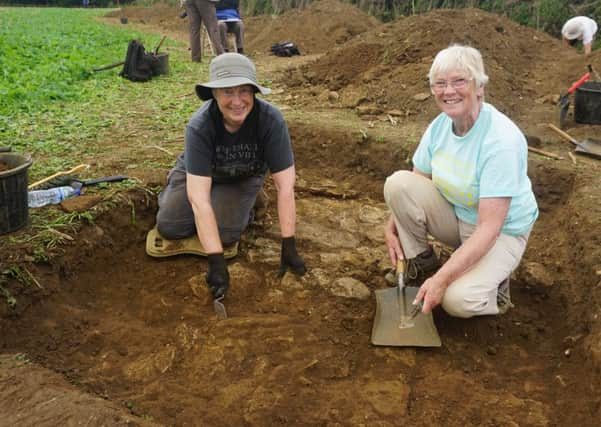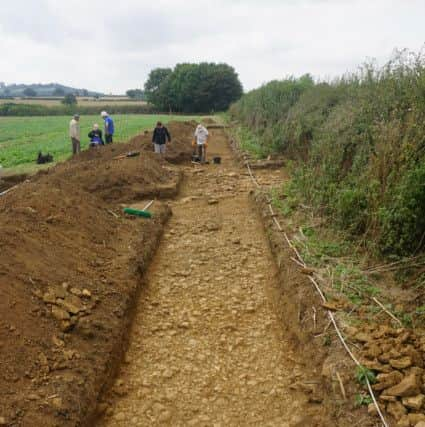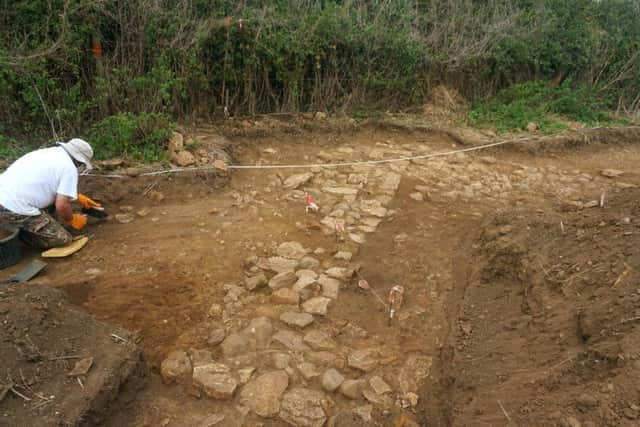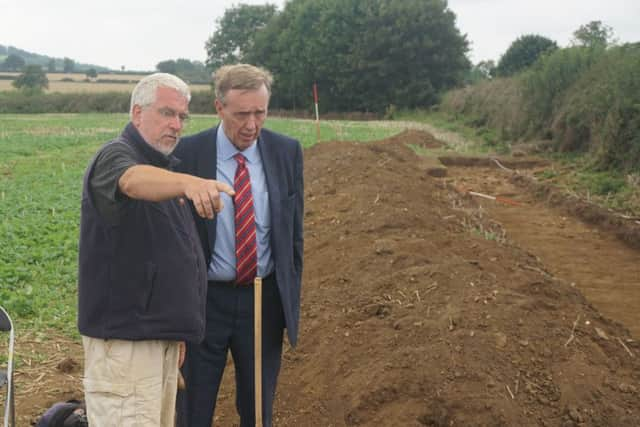Dig shows how the eviction of a whole village near Daventry created '˜refugees' in their own land


Archaeologists from CLASP have been working in fields off the B4036 between Daventry and the Long Buckby crossroads on the A5, in an area still know today as Thrupp.
Last week they unearthed walls of cottages, a stone building with an apse believed to be the chapel, and a road surface in the original village of Thrupp.
Advertisement
Hide AdAdvertisement
Hide AdThe settlement of around 20 well made stone and thatch cottages was emptied by the Prior of Daventry in the late 15th century to make way for sheep farming.


Each of the small cottages had a patch of land, and probably had access to communal land and fields as well.
Archaeological evidence shows the cottages were not medieval long houses, which usually housed both the family and their animals. At Thrupp the houses where well made and the animals lived elsewhere.
Those residents evicted would have been left with no land to grow food on, and no real social security safety net.
Advertisement
Hide AdAdvertisement
Hide AdHistorian and archaeologist Gren Hatton said: “Thrupp lies very close to the A5 – Watling Street – which was the border between the Danish ruled part of England on the Northampton side, and the Anglo-Saxon ruled part on the Daventry side.


“There’s evidence elsewhere that the border over time became porous and people from the Danish side saw land going untended on the Anglo-Saxon side and, with permission, moved over to start farming it.
“It’s likely that Thrupp was founded in a similar way when Danish people got permission to live here from the person in charge at Norton.
“We know a chapel, dedicated to St John the Baptist was founded here in 1257, and in about the mid-1280s a grange was built to store the produce taken in tax and tithes.
Advertisement
Hide AdAdvertisement
Hide Ad“By the late 1400s there were around 100 people living in Thrupp.


“We had the black death which killed up to half the population. That meant land that had been cultivated was now lying fallow – not making money for the landlord.
“Across the country we see enclosure orders made which turned the
“But in 1489 the Prior of Daventry, which by then owned the land, decided they could make more money from sheep than people. So everyone was evicted.”
Advertisement
Hide AdAdvertisement
Hide AdArchaeological evidence uncovered shows the stone-walled cottages were pulled down soon after to level the site and turn it into fields.


Back in the period a settlement of 100 people was a standard size village – it is the equivalent of evicting everyone in Norton or Braunston today.
At the time the only social safety net for people was the Church which had limited funds to help those in desperate need.
Mr Hatton said: “You have to think of the images we’ve seen recently of refugees from Bosnia or Syria.
Advertisement
Hide AdAdvertisement
Hide Ad“These evicted people had nothing. The didn’t have land so they would have been forced to try and make a living any way they could – soup boiling, basket making, weaving.
“No doubt some would have died, others might have had relatives in Norton they could live with.
“Interestingly the eviction didn’t do the Priory at Daventry much good because a few decades later along came Henry VIII and Thomas Cromwell and closed them down and seized their assets.”


CLASP is a group of local, mostly volunteer, archaeologists investigating the Roman and post-Roman world along Watling Street in the Daventry area.
Advertisement
Hide AdAdvertisement
Hide AdThey have been charting the movement of settlements and people around the area after the Roman town of Bannaventa at the Norton/Whilton locks crossroad area was abandoned.
The recent work at Thrupp was carried out after a geophys survey showed ditches on the site which may date to the Dark Ages after the Roman armies left England.
But work to date the ditches was thwarted after the diggers came down on the rubble and ruins of Thrupp.
Thrupp itself is important to investigate as the fields off the B4036 are earmarked for part of Daventry’s expansion in the coming years. To underline the point, the leader of Daventry District Council Cllr Chris Millar was invited to the see the excavations himself.